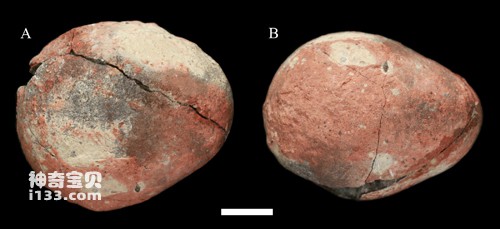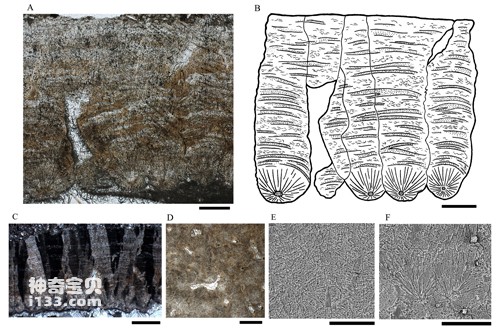The Academy of Sciences discovered an egg fossil in the Late Cretaceous strata of the Tiantai Basin, Zhejiang. The egg fossil is only 4.5cm long, with obvious sharp and blunt ends. The shape is very similar to a bird egg, but it shows the shell microstructure of a dinosaur egg.
The Tiantai Basin in Zhejiang produces a group of early Late Cretaceous dinosaur egg fossils represented by honeycomb eggs, reticulated eggs, stalagmite eggs and mosaic eggs. The eggshell of the newly reported fossil egg has a barrel-shaped cone, irregular stomata, and developed growth lines, which is very similar to the eggshell structure of stalagmite eggs, mosaic eggs, and paraorchids. However, these egg fossils are much larger than the new specimens and are nearly round. Therefore, the new specimen represents a new egg genus and egg species that is closely related to these egg fossils, and is named Parvoblongoolithus jinguoensis. The discovery of this new specimen enriches the composition of the dinosaur egg fossil group in the Tiantai Basin. More importantly, it proves that some bird egg characteristics, such as smaller size and oval shape, are in harmony with stalagmite eggs, mosaic eggs and Paracircular eggs are also found in the eggs of closely related dinosaurs.
The researchers also pointed out that since the egg fossils that are closely related to the new specimen are larger in size, it cannot be ruled out that the small size of this egg fossil is caused by temporary physiological disorders during dinosaur laying. Similar phenomena occur in modern times. It has also been reported in birds. Because there are no other egg fossils from the same clutch for comparison, it is initially designated as a new egg genus and egg species, and a new egg family is not established.

Figure 1 Homotype specimen of Parvoblongoolithus jinguoensis oogen. et oosp. nov., scale bar = 10 mm.

Figure 2 Microstructure of eggshell of Parvoblongoolithus jinguoensis oogen. et oosp. nov., A, B, E, F, scale bar = 0.2 mm; C, D, scale bar = 0.4 mm.
animal tags:
We created this article in conjunction with AI technology, then made sure it was fact-checked and edited by a Animals Top editor.